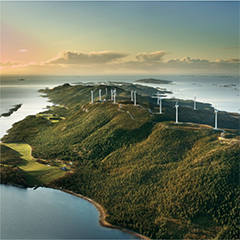Words: Kristian Holm, VP Renewables & Utilities at Kongsberg Digital
A typical wind turbine is equipped with a huge number of sensors, signal processors, and other types of monitoring equipment to ensure that it maintains its autonomous operations. These data points provide a myriad of data which can be used to optimise the operation of the turbine, cutting maintenance costs dramatically.
Usually, sensor data are used to maintain normal turbine operation. Temperature sensors reduce or stop the wind turbine if the oil temperature in the gearbox exceeds a set permissible limit. Vibration sensors stop the turbine if the vibrations surpass a set permissible limit. However, these sensors do not simply maintain operations; they add a host of other options to the wind turbine, and these can be used for operational excellence.
Did you know that in less than a second a single wind turbine can forward up to 1500 data signals that provide information about the turbine status? If you are really smart, you’ll use this information to define the current condition of the turbine. And if you are really, really smart, you’ll use it to predict the future condition or the remaining useful life of the turbine. Moreover, since wind turbines hold all this information, they are perfectly equipped for mastering the biggest obstacle to condition-based maintenance: the cost of additional sensor equipment.
Taking it one step further
Today, we can use the latest developments in advanced analytics to do all of this. We can even take it one step further and use the data from the wind turbines to predict their remaining useful life. As I will explain later, a wind turbine operator can benefit from this in a number of ways.
Over the past decade, monitoring systems have become more and more advanced, and the best of them utilise the latest techniques for handling what we call time-series data. The data received from the sensors is typically time-series data since a sensor delivers a value at a given time. Systems such as these collect, analyse, and present the data from wind turbines easily and intuitively, making them incredibly valuable to the wind industry due to the advanced analytics. Provided they are user-friendly, they offer an amazingly effective way to cut maintenance costs and increase operational excellence, especially if they are integrated into digital platforms.
As an aside, such systems can also be expanded for use with solar power and hydropower giving them value across business sectors and industries.



























